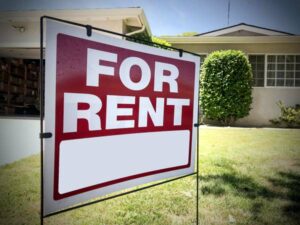If you’re new to real estate finance, it’s important to understand the capitalization rate, often called the cap rate. What is a cap rate? The cap rate in real estate investments is a key metric that helps real estate investors and industry professionals assess the potential return on investment (ROI) and the relative risk of a property. Let’s dig in!

Whether this is your first step on the property ladder or you’re a seasoned investor, it’s important to understand all the important terms. When analyzing cap rates, it’s important to compare similar properties in terms of type, location, income and expenses, quality and condition, and durability. Additionally, actual or projected income and expenses can significantly impact cap rates.
Definition of Capitalization Rate
What is a cap rate? The capitalization rate (cap rate) is a pivotal ratio in commercial real estate that compares a property’s net operating income (NOI) to its purchase price or market value. It is a crucial tool for estimating a property’s potential return on investment (ROI), independent of financing considerations. The cap rate in real estate investments indicates the anticipated return if the property was acquired outright with cash, such as using home equity for real estate investment. This metric allows investors to assess both the risk and potential return of a property relative to its market price.
Calculating the Cap Rate in Real Estate Investments
It’s essential to understand how to calculate the cap rate. The formula is straightforward and involves two primary components: Net Operating Income (NOI) and the property’s purchase price or current market value.
Cap Rate = Net Operating Income (NOI) / Property Purchase Price or Market Value
To compute the cap rate in real estate investments, you’ll need the following information:
- Net Operating Income (NOI): This is the annual income generated by the property after deducting all operating expenses, such as property management fees, maintenance costs, property taxes, and insurance. It excludes mortgage payments or financing expenses.
- Property Purchase Price or Market Value: This represents the initial amount paid for the property or its current estimated market worth.
Once you have these figures, divide the NOI by the property’s purchase price or market value to find the cap rate. This calculation clearly indicates the property’s potential return on investment based on its operational performance relative to its cost.
Macroeconomic Factors That Affect Cap Rates
Now that you have understood what is a cap rate let’s know which Macroeconomic conditions significantly influence cap rates:
Rent Growth
Higher inflation may boost rents, especially in short-term lease apartments, potentially offsetting rising interest rates. Conversely, economic downturns can raise cap rates by slowing rent growth and heightening risk perceptions.
Gross Domestic Product (GDP) and Unemployment
Strong gross domestic product (GDP) growth and low unemployment typically correlate with lower cap rates, indicating a robust investment environment. Economic downturns, characterized by high unemployment and low GDP growth, may elevate cap rates due to increased investment risk.
Stage in the Economic Cycle
Economic phases impact cap rates; crises tend to elevate rates as investors seek higher returns. Stable economic expansions with moderate interest rate increases may maintain stable cap rates, aligning income growth expectations with investor returns.
Location
Proximity to employment centers and demand hubs influences cap rates. Properties in stable, high-demand locations generally command lower cap rates due to reduced risk and consistent demand. In contrast, transitional areas with higher employment volatility may exhibit higher cap rates, reflecting more significant operational risks.
Asset Class
Cap rates vary across asset classes based on supply-demand dynamics and performance outlooks. For instance, multifamily and industrial properties typically boast lower cap rates than retail or office properties, reflecting differing market conditions and investment criteria.
Using Cap Rates to Compare Property Investment Options
After understanding how the cap rate in real estate investments works it is time to understand the effective utilization of this metric and how it empowers real estate investors in decision-making:
Comparing Properties in the Same Market
Cap rates enable direct comparisons among similar properties, highlighting superior ROI opportunities. For example, a 6% cap rate property may offer greater returns than a 4% cap rate property, adjusting for comparable risk levels.
Evaluating Market Trends and Conditions
Analyzing cap rates across property types and locations unveils market trends and undervalued opportunities. Local economic factors and demand dynamics influence cap rates, necessitating holistic market assessments.
Assessing Risk Profile
Cap rates serve as barometers of property risk; higher rates denote higher risk, while lower rates indicate lower risk. Properties in prime locations with strong demand often exhibit lower cap rates than those in less desirable areas, reflecting varied investment risks.
Determining Investment Feasibility
Cap rates gauge investment feasibility against required ROI thresholds. A cap rate below expectations may signal inadequate returns, while a higher rate may indicate lucrative investment potential, streamlining decision-making aligned with financial goals and risk tolerance.
Conclusion
Cap rates are indispensable tools for evaluating and prioritizing real estate investments. They provide insights into potential returns and risk exposure amidst evolving market dynamics. Leveraging cap rates effectively allows investors to navigate complex investment landscapes, optimizing decisions tailored to their investment objectives and risk preferences.



